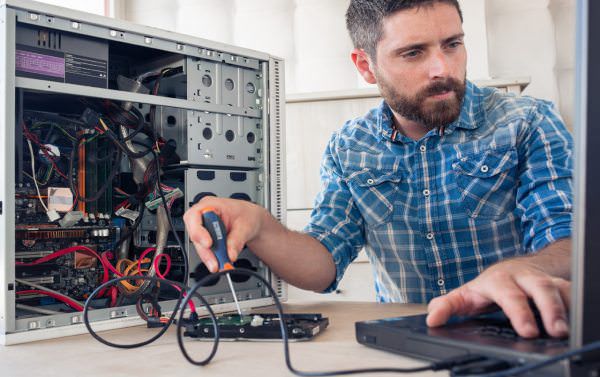
Let’s face it; we can be pretty rough with our stuff. Thanks to their portability, custom USB flash drives are among the many victims of everyday wear and tear. They can withstand a battery of survival tests depending on the model, but they do have their limits. The impossible can and will happen—a flash drive crunched by a truck tire or a brand new drive is “not recognized” for no apparent reason. So what happens when you need flash drive data recovery? At what point is a broken USB drive beyond repair?
There are two categories of failure that you could be facing, physical or logical. If your metal connector got smashed to the point where it no longer fits into the USB port, you could try to pry it open with needle nose pliers, but you’ll need to be extra careful so that you don’t cause further damage to the drive, not to mention, yourself. Without expert help, there’s no telling if your attempts at reshaping will allow it to fit into a port.
If another component of the USB drive has suffered from impact, there might be less of a chance to retrieve information. It all depends on the location of the damage. The most important thing to remember for your chances of salvaging precious data is that the NAND memory chip (the black silicon wafer inside your drive) is still intact. If it’s still in one piece, professional recovery experts have a strong chance of successful file retrieval (close to 99 to 100 percent).
With a non-physical flash drive failure like file corruption, a repair service can reverse the controller to get the data. One example of data retrieval for a device that was unharmed but stopped working is to remove some of the capacitors after taking off the outer casing. A USB cable is connected so that the computer can attempt to read lost files. If you’re not the engineering type, you can also try flash drive data recovery software to do a scan of your drive before you spend the dollars to get it repaired elsewhere.
When USB Flash Drive Data is Lost for Good
It cannot be stressed enough that a cracked or broken NAND chip will make it impossible to save your flash drive files because this central hub is where the entire library of data is stored. It operates as a whole, so having only pieces will not allow it to function.
Encrypted flash drives can be a little tricky for data recovery. While there’s hope to salvage your sensitive documents on an encrypted device with physical damage, a technical failure may not be so promising because of how this kind of data is digitally filed away and partitioned.
Micro flash drives and other chip on board (COB) drives are also not fixable since the chip is placed directly on the circuitry and covered in epoxy or silicon. As a result, it only leaves the plastic wafer and metal contacts, which doesn’t allow for access to the internal parts that would need to be fixed.
Have you ever had to recover files from a broken flash drive? How were you able to retrieve them? Share your tips with other readers below!
